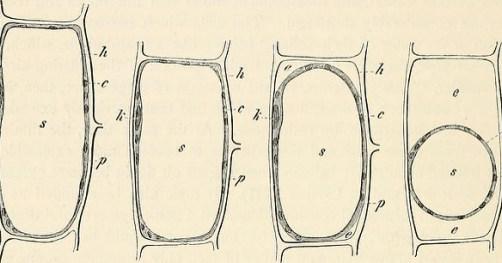Are you curious to know what is endosmosis? You have come to the right place as I am going to tell you everything about endosmosis in a very simple explanation. Without further discussion let’s begin to know what is endosmosis?
In the realm of biology and cellular processes, endosmosis is a phenomenon that describes the movement of fluids into a cell or across a semipermeable membrane. It plays a crucial role in maintaining cellular homeostasis, nutrient absorption, and various physiological processes. In this blog, we will delve into the concept of endosmosis, its underlying mechanisms, and its significance in biological systems.
What Is Endosmosis?
Endosmosis, also known as endocytosis or the inward osmotic flow, refers to the movement of fluids, typically water, from an area of lower solute concentration to an area of higher solute concentration across a semipermeable membrane. This process occurs in response to osmotic imbalances and helps regulate the water content and osmotic pressure within cells and organisms.
Mechanisms Of Endosmosis:
Endosmosis can occur through various mechanisms, depending on the specific cellular or physiological context. Here are two common mechanisms of endosmosis:
- Simple Diffusion:
In simple diffusion endosmosis, fluids passively move across the cell membrane from an area of lower solute concentration to an area of higher solute concentration. This occurs due to the random motion of solute particles, causing them to distribute evenly throughout the available space. The fluid movement helps equalize the solute concentration on both sides of the membrane.
- Active Transport:
In active transport endosmosis, energy-consuming processes are involved in moving fluids across the membrane. This mechanism is commonly observed in cells that actively uptake specific molecules or ions against their concentration gradient. Energy, typically in the form of ATP, is required to transport substances across the membrane, resulting in the movement of fluids.
Significance Of Endosmosis:
Endosmosis serves several vital functions in biological systems:
- Cellular Homeostasis:
Endosmosis plays a crucial role in maintaining cellular homeostasis by regulating the water content and osmotic balance within cells. Cells need to carefully regulate their internal environment to ensure proper functioning and prevent damage from osmotic imbalances.
- Nutrient Absorption:
Endosmosis facilitates the absorption of nutrients in various biological systems. For example, in the digestive system, endosmosis helps in the absorption of water and nutrients from the gastrointestinal tract into the bloodstream, ensuring their distribution to the body’s cells and tissues.
- Waste Removal:
Endosmosis also aids in the removal of waste products and toxins from cells. The process helps eliminate excess solutes and maintain the proper balance of ions and molecules within cells, ensuring efficient waste removal and detoxification.
- Cell Communication:
Certain forms of endosmosis, such as receptor-mediated endocytosis, play a role in cell communication. Cells can take in specific signaling molecules or receptors from the extracellular environment through endosmosis, allowing for intercellular communication and signal transduction.
Conclusion:
Endosmosis is a vital biological process that enables the movement of fluids across cell membranes and maintains the osmotic balance within cells and organisms. It plays a critical role in cellular homeostasis, nutrient absorption, waste removal, and cell communication. Understanding the mechanisms and significance of endosmosis enhances our knowledge of cellular physiology and the intricate processes that govern biological systems. By unraveling the complexities of endosmosis, scientists and researchers can further explore its implications in various physiological and pathological conditions, paving the way for advancements in healthcare, biotechnology, and our overall understanding of life itself.
You can collect more information on Getdailytech
FAQ
What Is The Endosmosis And Exosmosis?
Endosmosis is the movement of water into the cell when the cells are placed in a hypotonic solution and the Exosmosis is the movement of water out of the cell when the cells are placed in a hypotonic solution.
What Is An Example Of Endoosmosis?
Endosmosis is the movement of water from a high-concentration area to a low-concentration one through a semipermeable membrane when the cell is placed in a hypotonic medium. It is also known as the inward movement of solvent molecules. Examples of endosmosis: When raisins are put in regular water, they swell.
Where Is Endosmosis?
Endosmosis is the term used to describe the process by which water molecules enter a cell. Ans: In the presence of a hypotonic solution, endosmosis is defined as the transport of water molecules inside the cell by the cell membrane.
Is There A Difference Between Osmosis And Endosmosis?
Endosmosis is a type of osmosis, which is defined as the movement of water across a semipermeable membrane. Examples are the movement of water across the cell membrane, the movement of water across the membranes of bacteria, and the movement of water across plant cell walls.
I Have Covered All The Following Queries And Topics In The Above Article
What Is Endosmosis And Exosmosis
What Is Endosmosis Class 9
What Is Exosmosis And Endosmosis
What Is The Difference Between Endosmosis And Exosmosis
What Is Difference Between Endosmosis And Exosmosis
What Is Mean By Endosmosis
What Is Endosmosis In Biology
What Is Endosmosis?
What Is Meant By Endosmosis
What Is The Meaning Of Endosmosis
What Is Endosmosis And Exosmosis Class 9
What Is Endosmosis
What is the difference between endocytosis and Endosmosis
What does Endosmosis mean










